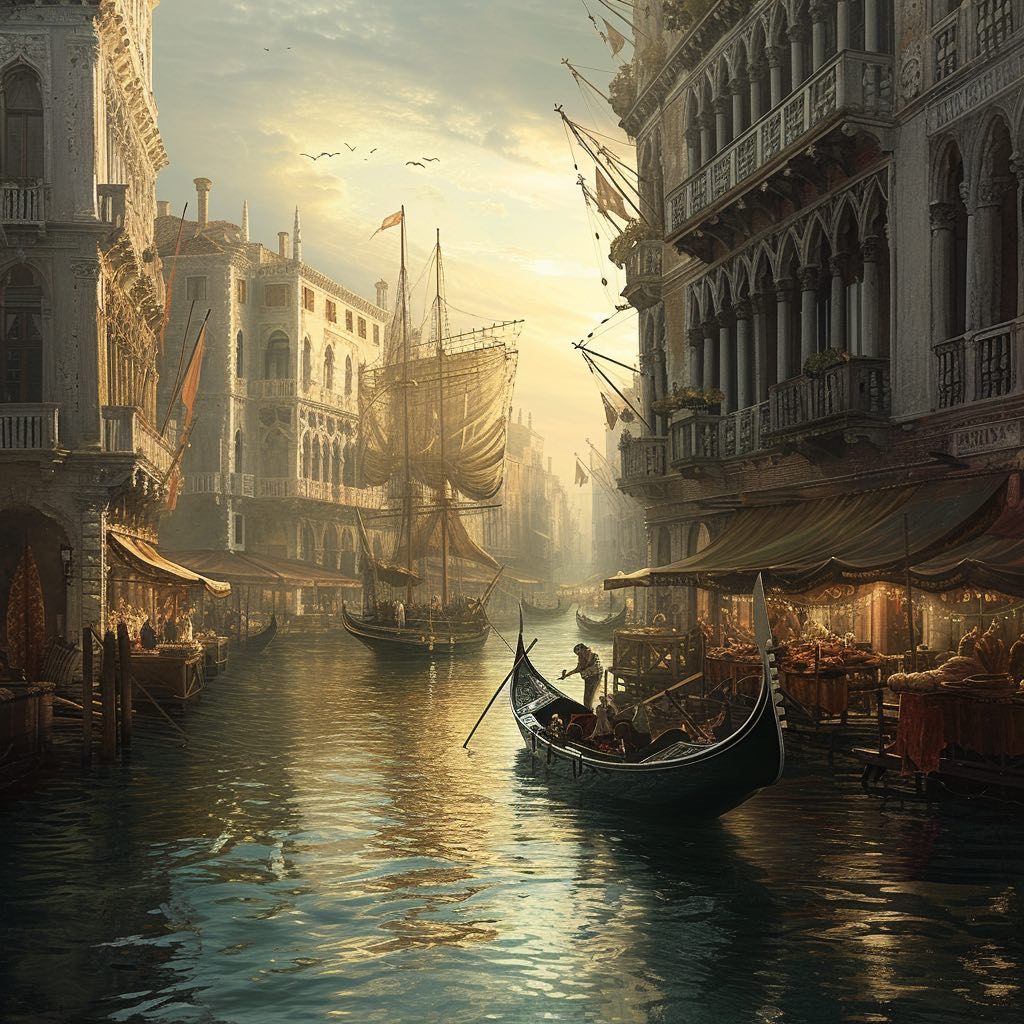Venice, the enchanting city on water, has a history filled with wealth, power, and cultural splendor. Located in northeastern Italy, Venice has been a center of trade and culture for over a thousand years. Here is a deep dive into the fascinating history of the city.
Founding and Early History
Venice was founded during the 400s and 500s by refugees from the mainland who fled barbarian invasions. They sought refuge on the small islands in the lagoon, where they built simple homes on stilts. Gradually, these settlements developed into a more organized society.
During the early Middle Ages, Venice grew in significance due to its strategic position and its ability to navigate the lagoon's waters. The city soon became an important trading hub between Western Europe and the East.
The Rise of the Republic of Venice
In 697 AD, the Republic of Venice was established, and its first doge, Paolo Lucio Anafesto, was elected. The doges (Venetian leaders) ruled the city in a form of elective monarchy that lasted for over a thousand years. During this period, Venice's trade and economy flourished.
In the 11th century, Venice established a trading fleet and began to dominate the Mediterranean. The city developed strong trade relations with the Byzantine Empire and the Arab world, contributing to its immense wealth. Spices, silk, and other luxury goods flowed into Europe through Venetian hands.
The Venetian Republic at the Height of Its Power
The 12th and 13th centuries were the golden age for Venice. The city became a major power both economically and militarily. Venetian merchants and shipbuilders led technological innovation and commercial practices. Venice controlled key trade routes and established colonies and trading posts around the Mediterranean and the Black Sea.
In 1204, Venice participated in the Fourth Crusade, which resulted in the conquest of Constantinople. This further increased the city's wealth and influence, and many of Constantinople's treasures were brought back to Venice, where they can still be seen, such as in St. Mark's Basilica.
Renaissance and Cultural Flourishing
During the Renaissance, Venice became one of Europe's most important cultural and artistic centers. The city became home to prominent artists such as Titian, Tintoretto, and Veronese. Architecture and music also flourished, with buildings like the Doge's Palace and works by composers such as Vivaldi.
Venice's unique blend of Eastern and Western influences gave the city a distinctive character that attracted intellectuals and artists from around the world. The printing press was introduced early in Venice, making the city a key location for the dissemination of literature and ideas.
Decline and Fall
In the 16th century, Venice's power began to wane. New trade routes to India and the Americas reduced the city's importance as a trading center. Additionally, Venice faced growing competition from other European powers, particularly the Ottoman Empire, which conquered many of Venice's possessions in the Eastern Mediterranean.
Despite economic decline, Venice remained a cultural force to be reckoned with. However, politically and militarily, the city became increasingly isolated and vulnerable. In 1797, Venice was conquered by Napoleon Bonaparte, marking the end of the Republic of Venice.
Modern Times
After Napoleon's fall, Venice became part of the Austrian Empire before being incorporated into the Kingdom of Italy in 1866. Despite changes in political rule, Venice has managed to retain its unique identity and cultural heritage.
Today, Venice is one of the world's most visited tourist destinations, known for its canals, historic buildings, and rich artistic legacy. However, the city faces significant challenges, including flooding and population loss. Projects like MOSE, a system of barriers to protect the city from flooding, represent some of the modern efforts to preserve Venice for future generations.
Venice's history is a story of adaptation and resilience. From its humble beginnings as a refuge for refugees, to its peak as a powerful republic and trading center, the city has played a central role in Europe's economic, political, and cultural history.
Today, Venice continues to fascinate visitors from around the world with its beauty and rich history.



